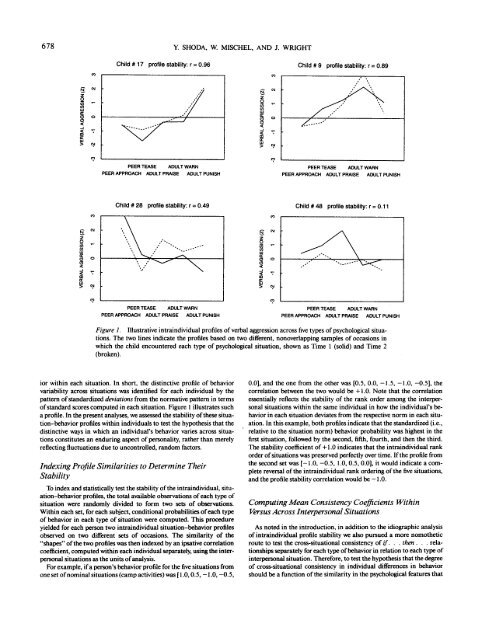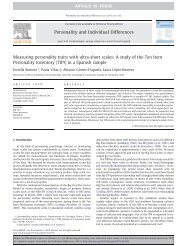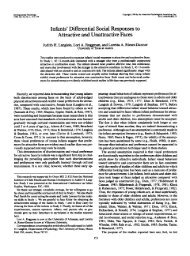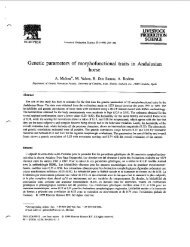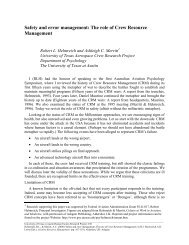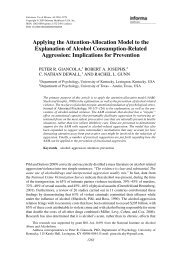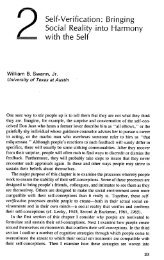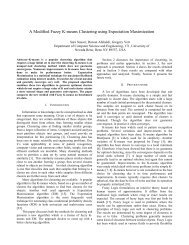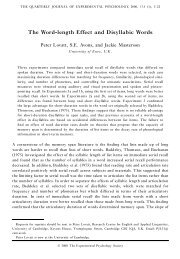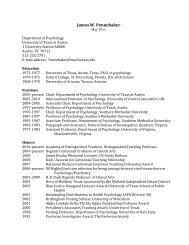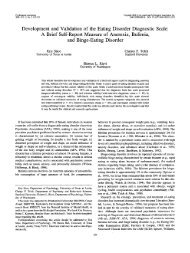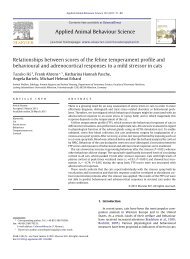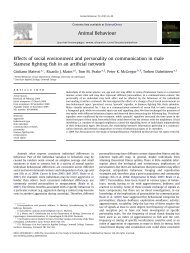PERSONALITY PROCESSES AND INDIVIDUAL DIFFERENCES ...
PERSONALITY PROCESSES AND INDIVIDUAL DIFFERENCES ...
PERSONALITY PROCESSES AND INDIVIDUAL DIFFERENCES ...
Create successful ePaper yourself
Turn your PDF publications into a flip-book with our unique Google optimized e-Paper software.
678 Y. SHODA, W. MISCHEL, <strong>AND</strong> J. WRIGHT<br />
Child # 17 profile stability: r = 0.96 Child # 9 profile stability: r = 0.89<br />
PEER TEASE ADULT WARN<br />
PEER APPROACH ADULT PRAISE ADULT PUNISH<br />
PEER TEASE ADULT WARN<br />
PEER APPROACH ADULT PRAISE ADULT PUNISH<br />
Child # 28 profile stability: r = 0.49 Child #48 profile stability: r = 0.11<br />
PEER TEASE ADULT WARN<br />
PEER APPROACH ADULT PRAISE ADULT PUNISH<br />
PEER TEASE ADULT WARN<br />
PEER APPROACH ADULT PRAISE ADULT PUNISH<br />
Figure 1. Illustrative intraindividual profiles of verbal aggression across five types of psychological situations.<br />
The two lines indicate the profiles based on two different, nonoverlapping samples of occasions in<br />
which the child encountered each type of psychological situation, shown as Time 1 (solid) and Time 2<br />
(broken).<br />
ior within each situation. In short, the distinctive profile of behavior<br />
variability across situations was identified for each individual by the<br />
pattern of standardized deviations from the normative pattern in terms<br />
of standard scores computed in each situation. Figure 1 illustrates such<br />
a profile. In the present analyses, we assessed the stability of these situation-behavior<br />
profiles within individuals to test the hypothesis that the<br />
distinctive ways in which an individual's behavior varies across situations<br />
constitutes an enduring aspect of personality, rather than merely<br />
reflecting fluctuations due to uncontrolled, random factors.<br />
Indexing Profile Similarities to Determine Their<br />
Stability<br />
To index and statistically test the stability of the intraindividual, situation-behavior<br />
profiles, the total available observations of each type of<br />
situation were randomly divided to form two sets of observations.<br />
Within each set, for each subject, conditional probabilities of each type<br />
of behavior in each type of situation were computed. This procedure<br />
yielded for each person two intraindividual situation-behavior profiles<br />
observed on two different sets of occasions. The similarity of the<br />
"shapes" of the two profiles was then indexed by an ipsative correlation<br />
coefficient, computed within each individual separately, using the interpersonal<br />
situations as the units of analysis.<br />
For example, if a person's behavior profile for the five situations from<br />
one set of nominal situations (camp activities) was [ 1.0,0.5,-1.0, —0.5,<br />
0.0], and the one from the other was [0.5, 0.0, -1.5, -1.0, -0.5], the<br />
correlation between the two would be +1.0. Note that the correlation<br />
essentially reflects the stability of the rank order among the interpersonal<br />
situations within the same individual in how the individual's behavior<br />
in each situation deviates from the respective norm in each situation.<br />
In this example, both profiles indicate that the standardized (i.e.,<br />
relative to the situation norm) behavior probability was highest in the<br />
first situation, followed by the second, fifth, fourth, and then the third.<br />
The stability coefficient of +1.0 indicates that the intraindividual rank<br />
order of situations was preserved perfectly over time. If the profile from<br />
the second set was [-1.0, -0.5, 1.0, 0.5, 0.0], it would indicate a complete<br />
reversal of the intraindividual rank ordering of the five situations,<br />
and the profile stability correlation would be — 1.0.<br />
Computing Mean Consistency Coefficients Within<br />
Versus Across Interpersonal Situations<br />
As noted in the introduction, in addition to the idiographic analysis<br />
of intraindividual profile stability we also pursued a more nomothetic<br />
route to test the cross-situational consistency of if. . .then. . .relationships<br />
separately for each type of behavior in relation to each type of<br />
interpersonal situation. Therefore, to test the hypothesis that the degree<br />
of cross-situational consistency in individual differences in behavior<br />
should be a function of the similarity in the psychological features that


